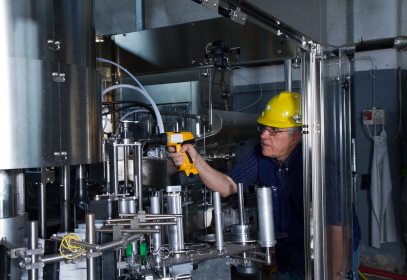In this episode we are going to look closely at preventive maintenance to prevent equipment breakdown. As we stated already in this series, preventive maintenance is important to avoid expensive and possibly critical breakdowns of equipment in operations, and it is also an important part of demonstrating control in a properly functioning quality and safety management system.
The challenges with preventive maintenance mainly have to do with when those maintenance activities are performed, and what happens when we can’t and won’t perform all of the scheduled preventive maintenance activities according to our schedule.
Preventive maintenance is an important mechanism of control within operations to prevent equipment breakdown.In order to properly achieve a functional program for maintenance we need to have two sets of documents. The first is the scheduling of the preventive maintenance, and the second is record of each repair performed in the facility.
A preventive maintenance schedule should include the piece of equipment, the part or parts involved in the maintenance, the person performing the maintenance and the frequency of the action. We do not have to schedule the action on a specific day, or at a specific time, but we do need to at least set it to once per week, once per month, once per quarter or once per year, twice per year and so on.
For the documenting of repairs, this should be a completed work order or repair log entry each time a maintenance person completes a repair on any device, equipment or part of the facility. The importance of creating the preventive maintenance schedule and separately making sure all repairs are recorded is that it gives us the information we need to determine if the preventive maintenance actions are being done frequently enough to prevent breakdown.
Manufacturer’s recommendations are always the appropriate place to start when trying to determine how frequently to replace, lubricate or adjust parts within equipment, but conditions within the facility, and how much stress is put on equipment can have a considerable impact on how accurate manufacture recommendations are to actual conditions for equipment in a specific operation.
An example of this is that an oven which is run seven days per week for two shifts per day is going to have considerably more wear than the same oven used twice per week for a half shift each time. This may seem obvious, but how often we choose to calibrate the internal temperature measuring devices within the oven may end up being the same in both cases, depending on how much evidence we have that the oven used all day every day is slipping out of specification or breaking down.
The frequency we determine on our preventive maintenance schedule is not set in stone, and should be updated as you learn what each piece of equipment may need based on use at the facility.
For facilities with dedicated maintenance employees, proper training on when preventive maintenance actions can and should be performed is critical. Maintenance employees with busy schedules are likely to perform preventive maintenance tasks when it is convenient or when they can, and this can create problems for a safety and quality program.
Depending on the activity, and on the task scheduled, the potential risk to products could be catastrophic, so many times preventive maintenance is scheduled during production down time. Preventive maintenance should never be performed above currently operating equipment. That includes ceiling tile repair, work on pipes, on HVAC units and in the space above drop ceilings.
If maintenance work is required above equipment, operations must be suspended during the maintenance, and a full cleaning must be done prior to start up. Another common issue with creating a preventive maintenance schedule is not completing all the tasks on the maintenance schedule.
In these situations, it is very important to make a note in the maintenance log or the computer program why the maintenance was not performed, and why that is acceptable. With the proper record keeping, any optional maintenance action can be delayed or dismissed on a case-by-case basis, but the decision to do so must be clearly documented.
Adjusting the preventive maintenance schedule is an excellent preventive action for non-conformance. In order to make sure that a corrective or preventive action involving maintenance is followed through, the preventive maintenance schedule, and the status of optional preventive maintenance actions must be well documented.
In order to make sure that changes to the preventive maintenance schedule are understood, or where new actions added to the preventive maintenance schedule are properly understood, documented training should occur with staff whenever a change is made.
Lastly, the preventive maintenance schedule also has the benefit of supporting our fraud and security program. Having an employee monitor the work of the contractor, and checking up on the accuracy of the work billed by the contractor are both actions that support efforts to maintain safety and integrity, and those follow ups should be noted in email or in a daily action log.
Also remember to provide basic training to contractors hired for preventive maintenance actions, and that training must include the specific safety and quality requirements of the facility that pertain to the work the contractor is performing.
In our next episode, we are going to look at performing repairs in operations, and how to properly document completed repairs.
Thank you for watching. For free downloads to accompany this video series, visit the free training videos & resources page of our website.
Subscribe to our YouTube channel or follow us on LinkedIn to be notified of new educational food safety resources.



